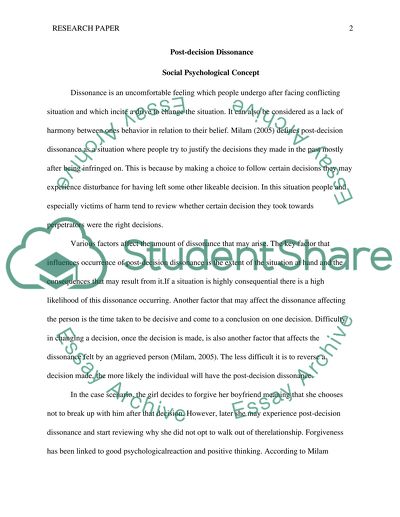Cite this document
(“Post-decision dissonance Research Paper Example | Topics and Well Written Essays - 1000 words”, n.d.)
Retrieved from https://studentshare.org/psychology/1464504-post-decision-dissonance
Retrieved from https://studentshare.org/psychology/1464504-post-decision-dissonance
(Post-Decision Dissonance Research Paper Example | Topics and Well Written Essays - 1000 Words)
https://studentshare.org/psychology/1464504-post-decision-dissonance.
https://studentshare.org/psychology/1464504-post-decision-dissonance.
“Post-Decision Dissonance Research Paper Example | Topics and Well Written Essays - 1000 Words”, n.d. https://studentshare.org/psychology/1464504-post-decision-dissonance.


